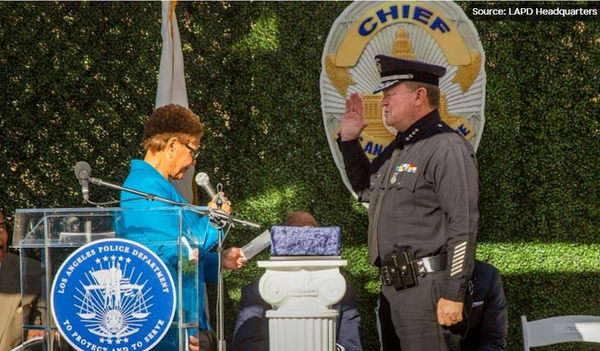
On a hillside an hour from Madrid, not far from the sepulchral splendour of the Escorial monastery, with its royal tombs, imperial maps and sacred relics, lies another, rather less austere, treasure house.
The Gladys Palmera collection, kept in a sprawling, tropical-hued complex crammed with 1950s Mexican film posters and prowled by the odd decorative monkey and jaguar, is the largest private archive of Latin American music in the world.
In its numerous niches and cabinets and on its many, many shelves sit 60,000 records, 50,000 CDs and countless cassettes and digital audio tapes, offering everything from bolero to garage rock, and from salsa to reggaetón.
After a decade near the Spanish capital, however, the collection could cross the Atlantic as the woman who has spent the past 30 years amassing it ponders donating its riches to a worthy – and preferably noisy – new home.
Among the archive’s scores of highlights are a rare green vinyl LP by the Cuban musician Arsenio Rodríguez, a pink-and-silver sequinned dress worn by the Afro-Cuban superstar Celia Cruz, and a recording of James Dean, released in 1957, behaving like a good coffee-house beatnik and playing the congas.
The complex also houses an online radio network that plays classic, contemporary and rare tracks, an exhaustive online catalogue and a brand new record label.
Although the collection now encompasses photos, posters, flyers, songbooks, magazines, books and personal memorabilia, it remains founded on one woman’s love for the songs she heard as a child.

Alejandra Fierro Eleta, a Spanish-Panamanian radio broadcaster, grew up in Madrid listening to records by Toña la Negra, Elvira Ríos, Cuco Valoy, Cuco Sánchez, Lucho Gatica and Amalia Mendoza that her father brought back from his business trips to Latin America. “I was listening to all this music from the cradle,” says Fierro. “I started helping myself to his records when I was little.”
By the time she was 12, she had also developed a passion for ham radio and for talking to people across the airwaves.
“There came a day when I didn’t know what to do with my life and I said to myself, ‘Well, what do you like?’, and I thought Cuban music and amateur radio. So I thought I’d like a radio programme.”
But her father had one stipulation: “When I told my dad I was going to be on the radio, he said, ‘Not with my name, you’re not’.”
Casting around for a suitable alter ego, Fierro decided to use the name Gladys – a family joke with one of her brothers – and felt that Palmera (palm tree) would serve as a suitably tropical surname.
“It came to me in a second and ever since then I’ve been Gladys Palmera.”
After starting her radio career on a small station near Madrid, Fierro worked for a national chain before setting up Radio Gladys Palmera in 1999 to broadcast Latin music to Barcelona and then to Madrid and Valencia. A decade later, she had swapped FM for the internet and was learning more about collecting and conserving rare vinyl.
Fierro and her small team have scoured the internet and record fairs to put together an archive made up of purchases from more than 40 countries, including several pre-existing collections.

Her colleague José Arteaga once tried to work out how long it would take to listen to the entire archive.
“I calculated it would take 62 years to listen to everything,” he says. “But that was a while ago. Perhaps it would be 80 years now.”
But, despite the size of the archive, Fierro says it’s “not about quantity – it’s about really, really high quality”.
At the end of last year, the collection launched its record label with the release, on 10-inch vinyl, of two late-1960s songs by the Guantanamo Boys. It will be followed over the coming months by a contemporary release, a compilation of 60s and 70s music from New York and the Caribbean, and some remixes.
Fierro has an eye on the longer term, too. In 2009, she set up La Escuelita del Ritmo (The Little School of Rhythm) in Portobelo, a Panamanian town that reminds her of Gabriel García Márquez’s fictional Macondo.
The free academy helps local children develop their musical, artistic and performance skills as they learn how to play instruments and build and decorate cajones, or drum boxes. Plans for residencies by DJs and production experts are also in the pipeline.
Three decades and countless acquisitions later, Fierro has her own future to consider. She has set up the Gladys Palmera Foundation to ensure the survival of the collection and its attendant enterprises, and the search has begun for a permanent home for the archive – possibly in the US.
“I’m trying to find a space for all this because I’m 63 and my health isn’t good,” she says. “This is a temple to music and I want to donate it all.”
There will, inevitably, be conditions. Fierro wants the collection kept out of the cold, anonymous confines of a traditional museum. Wherever it ends up, it will need to be “a buzzing place with a multi-use space for concerts and exhibitions”.
She gives short shrift to the idea that the collection is simply the culmination of decades of a very personal passion.
“It’s not an obsession – even if it may look like one,” she says. “What I’m aiming for here is excellence; to build the best collection there is and to do it properly. This isn’t about me and my life – I don’t care about that – it’s about showcasing all this work here. It needs to be shared.”







